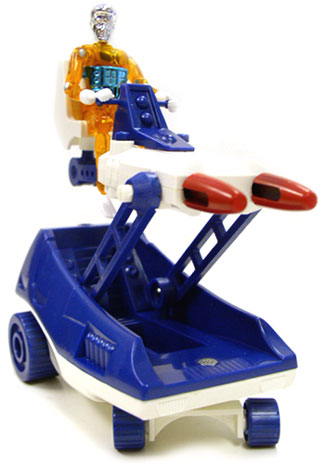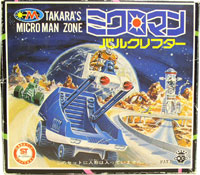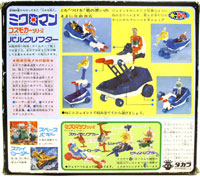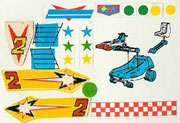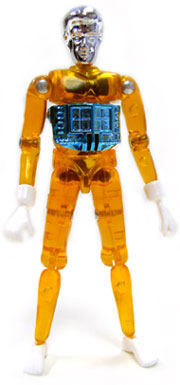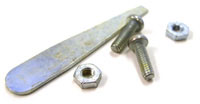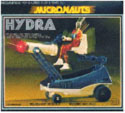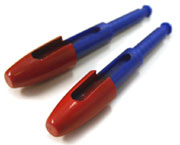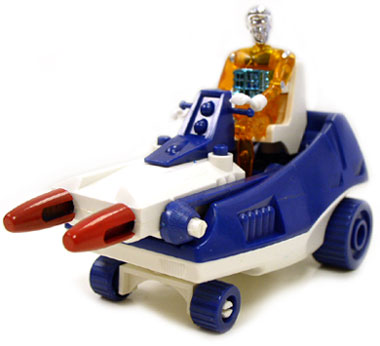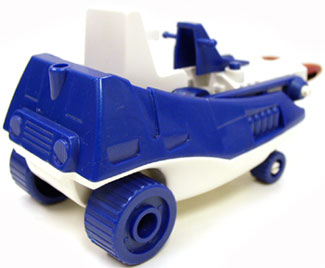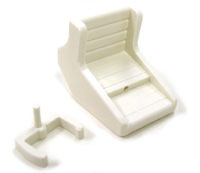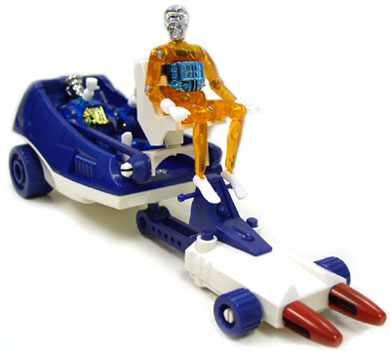|
|
|
||||||||||
|
1974 Microman Zone Series Microman Cosmo Car Series - MIC-02 Bulk Lifter (c.1974) |
Cosmo Car |
||||||||||
|
1974 Microman
Zone
1975 Project
Victory
1976 The line finally came into its own during the third year with new figures and the classic Microman Transfer Fortress.
1977 Command
1978 Takara tried new design and direction for the series with the released of Hoodman and Arden.
1979 Rescue
Team
1980 Punch
& Blizzard Man
New Microman Series
1981 New
Microman
1982 Micro
Robot
1983 Micro
Change
1984 Takara continued with the successful Micro Change series but the changing of the guard was inevitable. |
|
Microman Driver Not Included While the Cosmo Car did not come packaged with Microman figure, the toys were design especially for these early Microman Zone Microman. The figures were sold with Microman Kit-Machine toys and later as individual figure inside white capsule case. (Shown above - Reproduction Orange Microman) Screw Driver Included
One of the selling point for Microman Zone toys was the emphasis on "construction" skill so many of the early toys came totally unassembled and must be bolted together by the included nuts & bolts and mini-screwdriver.
|
|||||||||
|
Takara released second series of Microman Zone toys in August of 1974 following the release of the debut series Micro-(kit) Machine. The second series was called Cosmo Car and consisted of three small un-powered vehicles MIC-01 Space Buggy, MIC-02 Bulk Lifter and MIC-03 Sky Roader. Unlike the first series Micro-Machine, these toys did not come with Microman figure and was sold in small box. Cosmo Car toys were originally retailed for about 700 Yen back in 1974. (In comparison, Micro Machine toys were sold for 750 Yen and Micro Base M115 Conning Tower was sold for 2500 Yen). |
|||||||||||
|
|
Takara original marketing idea for Microman Zone was build around small size cyborg with the theme of scientific exploration and construction. Following this theme, Cosmo Car toys were sold also as "construction" toys and required some minor assembly. Cosmo Car MIC-02 Bulk Lifter was the second vehicle in the series. The design of Bulk Lifter was quite unusual with Microman seated on an elevated seat. Bulk Lifter had missile launcher and came with two missiles (with the nosecone painted red, a commonality for missile rocket back in 1960's and early 1970's). The missiles were spring loaded design and this was one of the gimmicks of the Cosmo Car series. The second selling gimmick was the interchangeability of these Cosmo Car toys. This feature would later became one of the main selling point for later Microman line. Bulk Lifter featured standardized 5mm port and peg and the toy can be reconfigure in various ways or even combine with other two Cosmo Car toys for even more playability. |
||||||||||
|
Microman
Bulk Lifter in Alternate Mode |
|||||||||||
|
Cosmo Car toys were designed exclusively for the early Microman Zone figure. At this early point, Microman were mainly sold as miniature "micro" version of the Henshin Cyborg line. The figures did not yet incorporate the 5mm standardized port. The seat for Cosmo Car toys, like that of the Micro-Machine were fitted with small clip to hold the figure in placed. When Mego licensed Microman, Bulk Lifter (along with Space Buggy) was sold as parts of the early Micronauts line up. Bulk Lifter became Micronauts Hydra and Space Buggy became Galactic Cruiser. The third vehicle Sky Roader was never released as part of the Micronauts toys. Microman Bulk Lifter toy was retooled for the Micronauts line (which debuted in 1976) and the clip style seat was changed (though the picture still appeared in the instruction sheet) and replaced with 5mm port style seat that utilized the "L" connector piece. Micronauts version also replaced the missiles with safety style "rubber tip" design that would became common with Micronauts toys that featured missile firing gimmick.
|
|
||||||||||
|
|
|||||||||||
